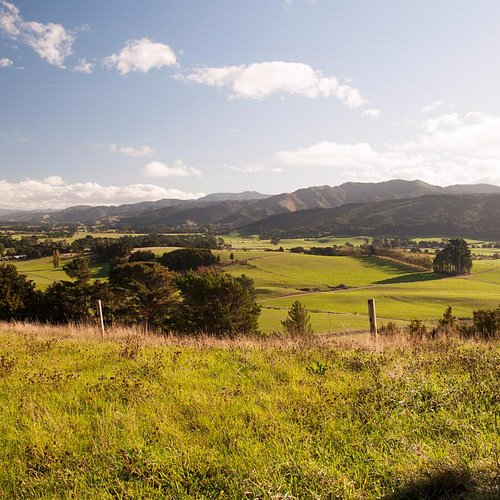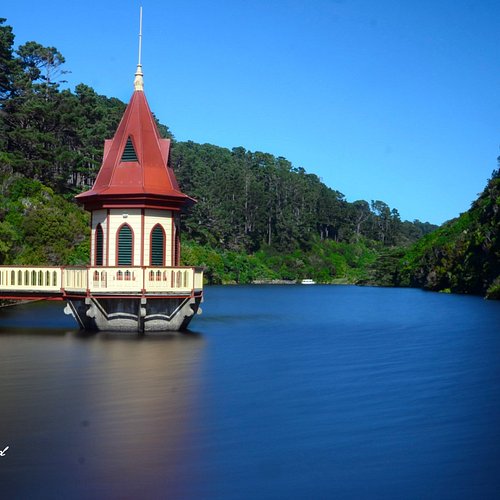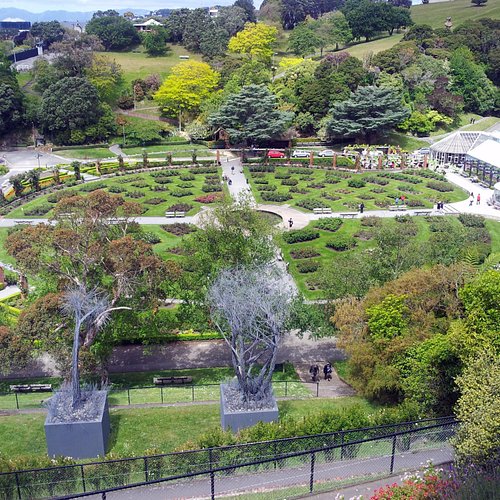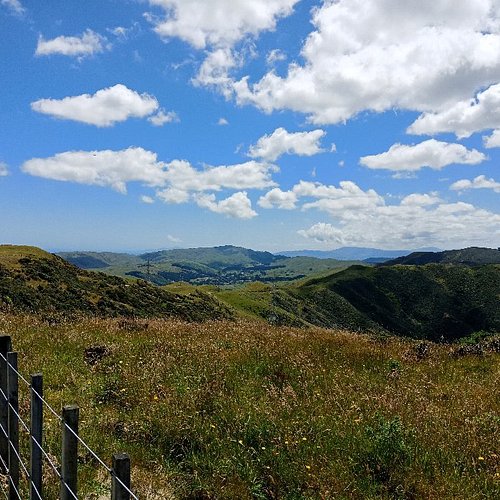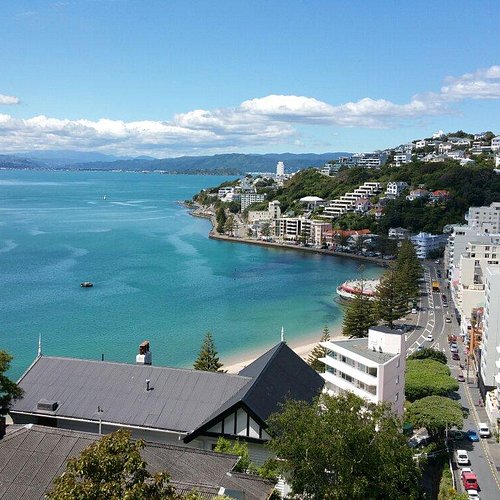What to do and see in Greater Wellington, North Island: The Best Nature & Parks
Discover the best top things to do in Greater Wellington, New Zealand including Castlepoint Lighthouse, Fensham Bush Reserve, ZEALANDIA Ecosanctuary, Wellington Zoo, Red Rocks Reserve, Wellington Botanic Garden, Otari-Wilton's Bush Native Botanic Garden, Kiriwhakapapa Loop, Mount Kaukau, Oriental Bay.
Restaurants in Greater Wellington
1. Castlepoint Lighthouse
Overall Ratings
5.0 based on 179 reviews
Always check the website for changes that might affect your trip.
Reviewed By Judave - Tauranga, New Zealand
A place that has been on our bucket list for a while an amazing spot, wild and wonderful scenery. Make the most and climb up to the lighthouse, really worthwhile the scenery is amazing from the vantage spots around the lighthouse.
2. Fensham Bush Reserve
Overall Ratings
5.0 based on 26 reviews
Reviewed By CycleKerry - Wellington, New Zealand
Terrific walk not far from Carterton. Well done Forest and Bird for maintaining easy to walk tracks wth a fantastic lookout over the Wairarapa.
3. ZEALANDIA Ecosanctuary
Overall Ratings
4.5 based on 2,744 reviews
Imagine a lush forest full of rare native animals. Discover ZEALANDIA – an ecosanctuary home to over 40 rare native species and 32km of walking tracks. Explore the outdoors at your own pace or be led by a guide! Our nature experts will show you the best places to spot wildlife like kakariki, tuatara and takahe on a ZEALANDIA by Day tour. Relax at Rata cafe with delicious food made from sustainably sourced ingredients and admire the views over the lake. Browse locally designed art, jewellery, homewares, books, clothes and gifts at the store where the products you buy have purpose and help the sanctuary to operate. For something a little more adventurous, see how the sanctuary transforms after dark on a ZEALANDIA by Night tour and search for thousands of glow worms and over 150 kiwi. Experience this world-renowned conservation success that lies only minutes from Wellington’s CBD. As a not-for-profit, your visit helps us ensure the future flourishing of New Zealand’s native wildlife.
Reviewed By Ealgian - New York City, United States
I hope my comparison of Zealandia to Jurassic Park is not interpreted in a negative fashion. Growing up in the era of those films that gave me a deep appreciation for our natural world as well as the unique talent of human beings to mess up that natural world, it was the first comparison that came to mind upon visiting Zealand. There is truly no place like it on earth. The combination of science, engineering, and love for our planet and its creatures that Zealandia represents is infinitely inspiring. You will see and hear so many fascinating creatures here, especially birds. The tour guides will also share interesting facts about how the work of preservation is done, and the clever solutions people have devised to undo some of the damage humans have wreaked on NZ. If you take the night tour, there's a good chance you'll see kiwi birds (to see them for certain, highly recommend the Kiwi Birdlife Park in Queenstown).
4. Wellington Zoo
Overall Ratings
4.5 based on 1,501 reviews
Wellington Zoo is New Zealand’s first Zoo, and Wellington’s oldest conservation organisation, caring for animals since 1906. The Zoo is a not for profit charitable trust and we're proud to be the world’s first carboNZero certified zoo. We are guided by our kaupapa Me Tiaki, Kia Ora! We must look after our environment, so all things will flourish. It is up to us collectively to make a difference for animals and the wild places they call home. See our website for entry prices and to plan your visit. If you have accessibility needs, you can find more visitor information on our website.
Reviewed By judemgard - Shrewsbury, United Kingdom
Reasonably priced and spot-on size-wise with approachable rangers and a wide range of animal environments this zoo is great in every way for kids. Take a full day and a picnic ( the food is great here but over-subscribed leading to lunchtime queues). There are water-fountains, playgrounds and picnic areas, the animals seem well-cared for and it is a treat for any animal lover. I kept losing the kids I was with but all OK and a measure of how much there is to explore. Roll on tagging!
5. Red Rocks Reserve
Overall Ratings
4.5 based on 174 reviews
Reviewed By CarolDM1900 - Montpelier, United States
There's a World War II forward observation post with huts and bunkers atop Sinclair Head, the high promontory that looms over Devil's Gate and the seal colony just beyond. It's an impressive site to visit, redolent of history and offering some of the best views over Cook Strait. On a fine summer day, the sky above is magnificent. If you're hardy and adventurous, with good footwear and sturdy long pants, you can get there via a loop of trails that will take you through some of the more remote interior sections of the reserve, where you are less likely to encounter other hikers and can enjoy the sound of silence over the hills and through the deep valleys. I found this to be one of the most challenging, but enjoyable, hikes I've done in Wellington, and I've done many of them, at least 8 in this particular reserve. Here's how to put together the loop. Start from the main trail head, a bit inland from the Coastal Track (road) as it nears Devil's Gate. Between a couple of "baches" (beach shacks), you'll see a big sign at the bottom of rising hills showing the different tracks on a map. You will start by rock-hopping across a shallow stream that flows by to the right of the sign, then follow the steep, winding trail straight ahead. A sign will eventually identify it as the Pari-Whero (Red Rocks) Re-Route. NOTE: When you begin, DO NOT turn right BEFORE the stream to follow the steep uphill gravel road with a barrier across it. That is the part of the Red Rocks track route that is now closed. The re-route rises steeply, has a couple of stream crossings, and eventually, about halfway up the hills, brings you to a hard-to-miss sign that points you to the connector for the Radome Track and the Bunker Track. You'll also traverse some of the Waipapa Loop Track. From the connector sign, it is still a long way to the WW II headland bunkers, with some very steep slopes to navigate both up and down, as you will essentially be crossing over several big hills and the valleys between them to get to the historic site. This being the dry season, small rocks and pebbles are loose and tend to slide in the dust when foot pressure is applied on the slope, so take great care on the downhills in particular. I slid a couple of times, despite wearing trail runners with aggressive treads. Some sections of the track wind through very prickly bushes that nearly obscure the pathway. You can't always detour around them, so don't even think about coming this way in shorts and short-sleeved shirts. These bushes are nettlesome and can raise welts. All this may have you wondering if you really want to take this loop. But I assure you, once you are up high enough to see the observation post in the distance, you will be strongly motivated to get there, even if you are tired and a bit scratched up. And besides, it a long, difficult way back retracing your steps. Better to press on. Once you get to the site, you'll discover that there is some graffiti on the buildings, but it does not much detract from the experience of seeing the old installations, especially the bunkers with the grass growing on the roofs in an effort to hide them from sight. If you are historically-minded, as I am, you will have a deep feeling about what went on here, being able to picture it "live" in the empty structures that remain today. It is a moment in time in the dramatic shadow of history. Get out as close to the edge as you cautiously think appropriate and walk around: the views up and down Cook Strait from this spot are glorious. Alas, there is no historical interpretation, but I think what you see is enough to make you feel the history and the impact of the place. So take your time, take it all in, and enjoy it. To complete the loop and return to the place you began, you should begin to descend the trail you used to get up to the buildings. Focus intently on the right side as you start to go down, and you will see a small, somewhat overgrown track that has no sign but is distinguishable because of its narrow tramped pathway of dried grass that clearly begins to move toward a descent in the distance. Once you start to follow the tramped down grassy pathway, you will see occasional metal posts, some with yellow plastic caps on top. There are sections that may require some trial and error to keep on the track. Sometimes you may have to dive under big bushes to find and follow the trail. Parts of it are so overgrown that the trail just seems to disappear. It does help to know that you're definitely going down, in a fairly narrow valley, and that this last part of the loop is relatively short. You will get there. The last section of the track is the most difficult because its runs right on top of a steep, stony creek. You will be stepping over rocks with moss and water trickling down them. It is slow going, but not far from the beach. You will exit the trail right by a local "bach" that has a jolly roger flag on the roof of a rough shed. From there, it is just steps back to where you began, and in any case you will see the Coastal Track (road) right ahead of you. If you'd rather not do this whole loop track, you can do a there-and-back on the shorter, more direct route used to descend on the last part of the loop. To find the beginning, start at the main trailhead sign and map, then walk to the left. You'll cross a little bridge and then find the track between two baches, nearest the one with the jolly roger flag above it. Stroll up what seems to be a private driveway toward the bach's outdoor shed, and you will see on your right a rough, hand-painted sign with the word "track" on a bright red arrow pointing the way. I would personally not like to take that shorter, more direct track uphill, given the difficult climb over the descending stream with the water and the moss. Plus, it misses the peaceful charm of the trails in the quiet interior hills and valleys. But if your time is limited, and you 're willing to scramble a bit to see the WWII observation post site, then by all means give it a try. The loop trail took me about 3 hours to do, but I did not hurry. I also spent time on top taking photographs and just enjoying the scenery. Having made a significant effort to get there, I wanted to savor the experience of being there. If you elect the shorter, more direct there-and-back route, you can probably cut the time in half, depending on your strength and agility. This is a great place, the more so, I think, because of the invigorating hike and the dramatic scene changes you experience while getting there via the longer loop. You miss that on the shorter, there-and-back trail. But whichever way you go, I think you will enjoy your visit. Highly Recommended.
6. Wellington Botanic Garden
Overall Ratings
4.5 based on 3,643 reviews
Visit Wellington Botanic Garden and enjoy its 25ha of unique landscape, protected native forest, conifers, specialised plant collections, colourful floral displays, and views over Wellington city. The garden is a Garden of National Significance by the Royal New Zealand Institute of Horticulture and is an Historic Places Trust Heritage Area. Take the Cable Car up and follow the Downhill path to the city.
Reviewed By kpiddy - Brisbane, Australia
The Wellington Botanical Gardens are situated high on the hill above the city, it is a wonderful relaxing space to explore, although not flat, the gardens are spread out over the hills, the pathways are sealed or compacted dirt. There are a variety of themed gardens, Peace, Rose, Herb, Hydrangeas, Fernery, Camellias, Rock and succulents and an Australian garden. From the city centre the easiest way to reach the gardens is to take a cable car ride, the views from this point are magical, a great photographic opportunity with Wellington city and the harbour in the background. Within the gardens are many statues, meteorological observatories, a garden laid in the formation of the solar system near the Museum of Wellington Observatory and a WW1 Krupp Gun. We enjoyed the walk down the hill to the Lady Norton Rose Garden, Begonia House, a cafe and on to the Bolton Street Historical Cemetery. During our stay in Wellington we visited the gardens twice and still didn't get to experience everything. At the time of our visit the gardens were celebrating its 150th year anniversary.
7. Otari-Wilton's Bush Native Botanic Garden
Overall Ratings
4.5 based on 277 reviews
Otari Native Botanic Garden and Wilton's Bush Reserve is the only public botanic garden in New Zealand dedicated solely to native plants. The Garden is a unique plant sanctuary and forest reserve and includes 100ha of native forest and 5ha of plant collections. Some of Wellington's oldest trees are here, including an 800-year-old rimu. It is classified as a Garden of National Significance by the Royal New Zealand Institute of Horticulture. Just a 10-minute drive from the CBD or take the no. 14 bus bound for Wilton and get off at the Warwick St/Wilton Rd stop. Tell the bus driver and they will be sure to stop.
Reviewed By Car0le88 - Manchester, United Kingdom
A friend took us on the Otari-Wilton Bush trails- first the circular then on to the yellow trail to see the 800 year old tree. The trails were amazing, quite a few steps up and once you get all the way to the top to see the tree, some interesting trails back to the carpark. Would love to do some more next time we visit NZ. Beautiful specimens of plants and trees.
8. Kiriwhakapapa Loop
Overall Ratings
4.5 based on 3 reviews
Always check the website for changes that might affect your trip
9. Mount Kaukau
Overall Ratings
4.5 based on 238 reviews
Reviewed By Lynleyfish - Cambridge, New Zealand
What a great view of Wellington City and Harbour! I walked up with a friend from the Khandallah side. The track was well-worn and easy to navigate.
10. Oriental Bay
Overall Ratings
4.5 based on 947 reviews
Reviewed By andrewcR7911RV - Wellington, New Zealand
This is one of my favourtie places in Wellington alongside Mt Victoria lookout and the Brooklyn Wind Turbine. Grab some fish and chips from the Chippery and enjoy a picnic on the beach, or on the boatshed roofs if you want be like the cool kids :D


